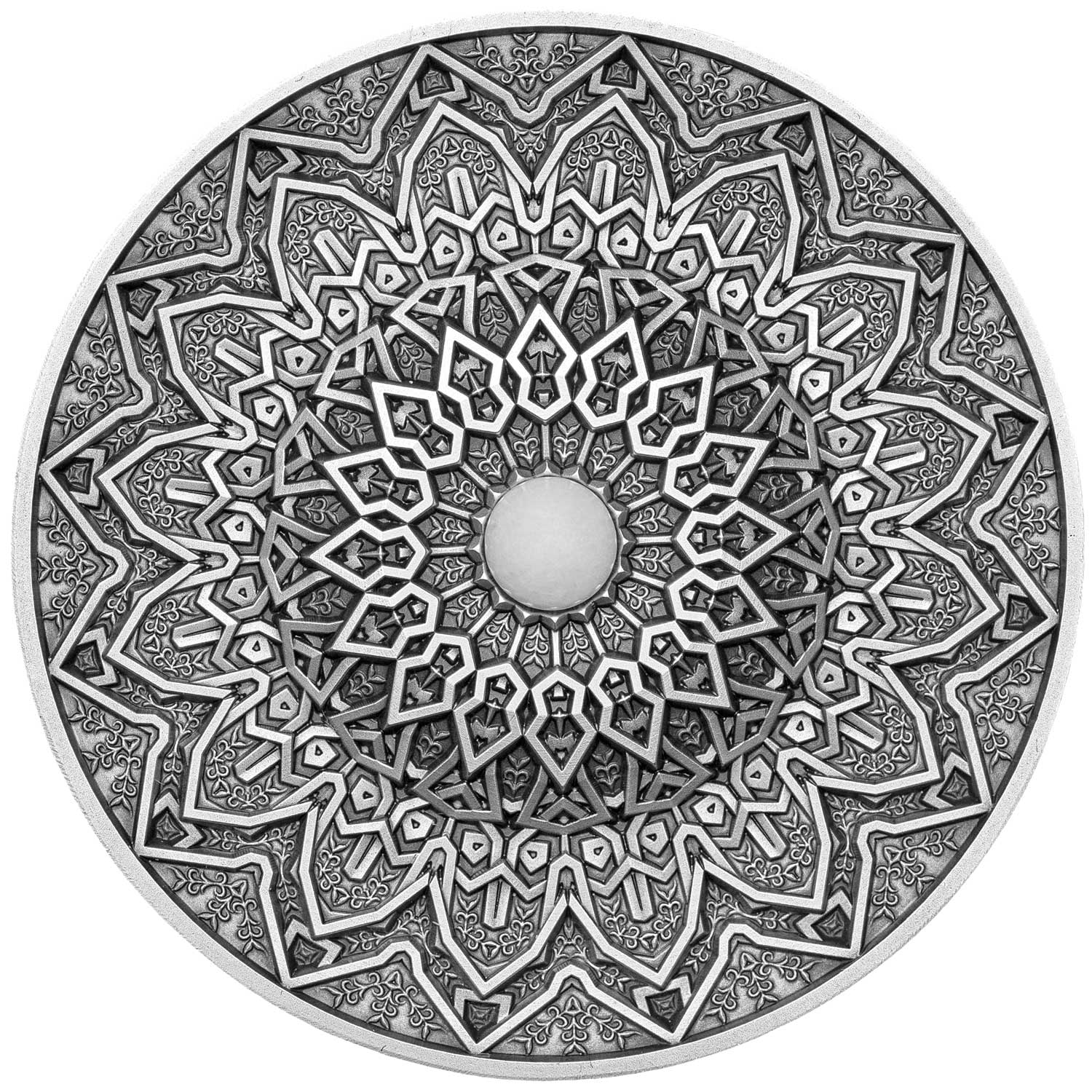Mandala Art reaches new heights of relief and excellence with its Persian themed sixth annual issue
Art Mint’s Mandala series first appeared back in 2015 with a beautiful interpretation of a Kalachakra Mandala, replete with a crystal centre. Since then, they’ve issued a single piece every year in this series, although there was also a special and very limited design for Notre Dame, so sadly thrust into front page news with a devastating fire. That coin was easily one of our favourites of 2019.
Back for 2020 with a sixth annual release, the latest region to get the mandala treatment is one that has its own long links with the cultural symbol – the Persians. We’ve seen a gradual rise in the levels of relief and detail that this series has brought to market since its debut, but we’ve no problem calling this the best yet. Fortunately, Art Mint are one of the few to provide high-resolution images of the finished article, so you can clearly see what we’re talking about.
The mandala pattern is intricate, sharply defined, and with a white jasper orb at its centre. You can almost see the old Persian beliefs given form here. The border is crisp, clean and carries an engraved serial number. The domed centre has not hindered the application of the pattern in any
way – it retaining the sharp definition and fine detail despite the
uneven canvas. Quite superb. The obverse remains the common one for the series – a simple Fijian national coat of arms with the surrounding issue details. The antique finish of the reverse face is carried over.
Boxed with a Certificate of Authenticity, the coin retains the 500 mintage that has served Mandala Art since 2015, and the three-ounce silver format. It’s been a pleasure to watch this fine series grow into what has become one of the more eagerly anticipated releases in the numismatic calendar, in the same way that Tiffany Art and some of the Mint of Poland’s mythology series have. This isn’t a budget series of course, but that doesn’t stop every issue selling out in short order, with early issues attracting interest on the collectors market. Available to order now. We should hopefully have a Coin Series Profile to the range up next Monday.
SHAMSEH, THE PERSIAN MANDALA
The meaning of mandala comes from Sanskrit meaning “circle.” It appears in the Rig Veda as the name of the sections of the work, but is also used in many other civilizations, religions and philosophies. Even though it may be dominated by squares or triangles, a mandala has a concentric structure. Mandalas offer balancing visual elements, symbolizing unity and harmony. The meanings of individual mandalas is usually different and unique to each mandala.
Despite popularly being associated with the Indian Subcontinent, the mandala has plenty of history elsewhere, including Ancient Persia. Even dating back to 6th century BCE, Persepolis, the ceremonial capital of the Persian Achaemenid Empire, can be seen to have employed the motif in wall decoration, and there are many examples in Persian art also. Because kings of this empire often employed artisans from India, it is thought the motif was brought to Persepolis that way.
The Persian motif was called ‘Shamseh’ and was usually depicted as many rays projecting out from a centre. The centre represents god, with the rays meant to symbolise all of the creatures of the universe. The tighter pattern closer to the middle are those creatures closer to god. The Shamseh was widely used in the later Safavid period in Iranian/Persian history. The ceiling of the Sheik Lotfollah mosque in Isfahan is a perfect example.
| SPECIFICATION | |
| DENOMINATION | $10 FJD (Fiji) |
| COMPOSITION | 0.999 silver |
| WEIGHT | 93.3 grams |
| DIMENSIONS | 50.0 mm |
| FINISH | Antique |
| MODIFICATIONS | High-relief, white jasper insert |
| MINTAGE | 500 |
| BOX / C.O.A. | Yes / Yes |






Possibly one of the finest designed Mandala coins ever produced, of course that depends on your taste in modern numismatics.
The actual photos supplied by the mint are certainly a real plus and should offer no surprises once in hand.
More mints should offer real photos on their high end issues.
The domed “layering” of the design elements integrated in the this Mandala are truly remarkable.
The light colored Jasper stone compliments this coin well.
Thanks again Mik for your work.